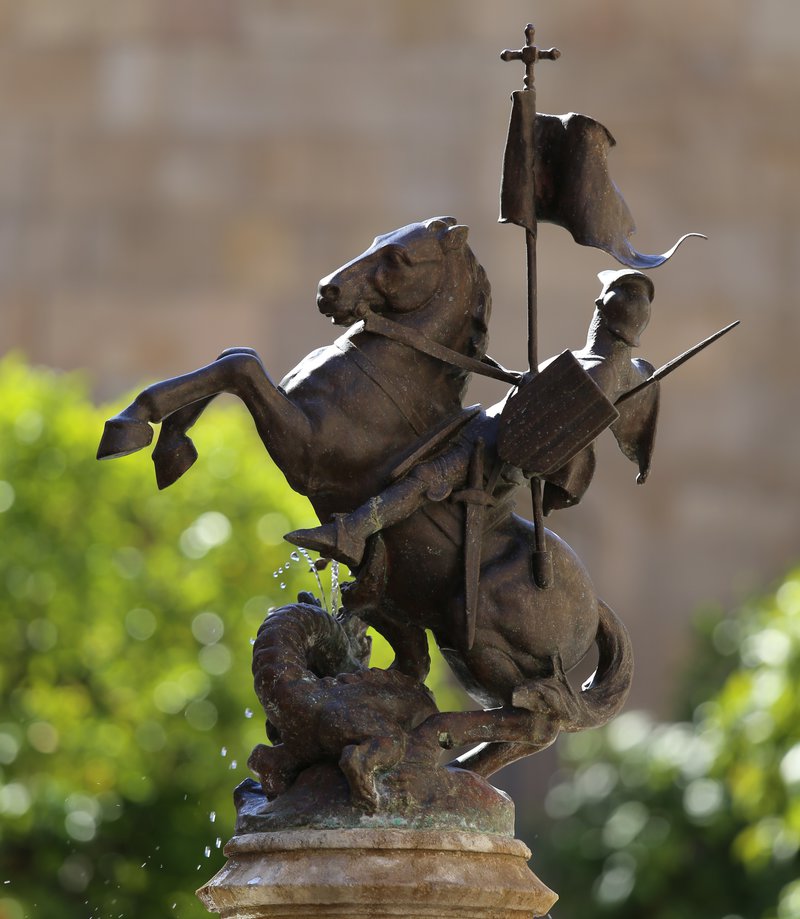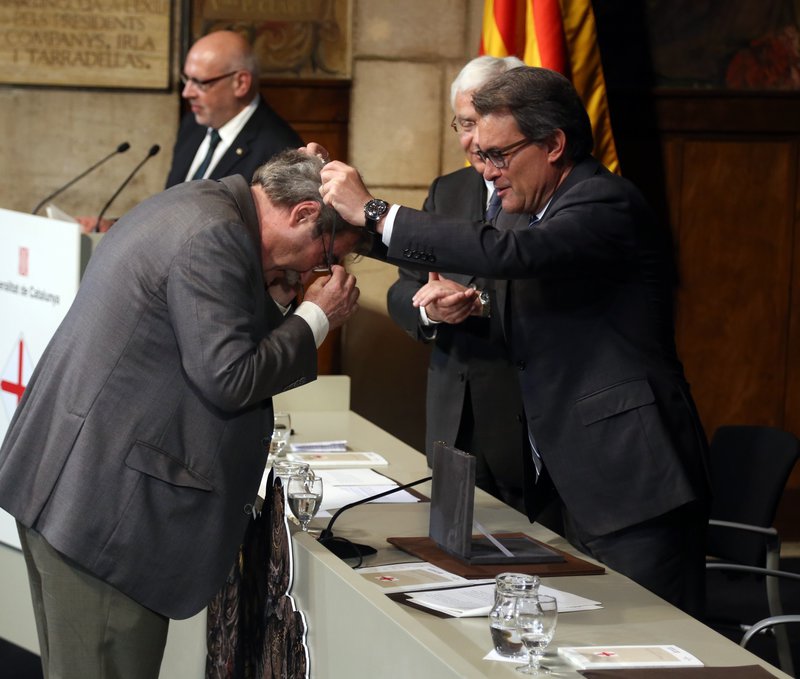All about George Of knights and dragons
The Diada de Sant Jordi is these days dominated by the Catalan tradition of exchanging books for roses but the origins of the festival are rooted in the Saint George legend
Amid the strolling crowds browsing books and the flower stalls festooned with roses, it is easy to forget that the Diada de Sant Jordi is, at least in origin, a profoundly Christian celebration. April 23 may now be World Book Day, after the Catalan tradition of gifting books in exchange for roses, but Sant Jordi, or Saint George, is above all a patron saint, and not just in Catalonia.
George appears to be one of the more popular Christian saints, as he is also the patron of England, Aragon, Georgia, Lithuania, Palestine, Portugal, Germany and Greece. Nor does his popularity stop there, as George has also been chosen as the patron of a number of cities around the world, including Moscow, Istanbul, Genoa and Venice. If the dragonslayer did not have his hands full with that, George is also the patron saint of soldiers, archers, cavalry and chivalry, all sound martial characteristics in-line with his knightly reputation. Yet, at the same time, and for some unclear reason, George is also the patron saint of farmers and field workers, riders and saddlers, as well as lepers, plague victims and even sufferers of syphilis.
The place with perhaps the strongest claim on the knight is – somewhat a little paradoxically considering the dominance of Islam in the area – Palestine. This is because, according to the tradition, Palestine plays a large role in the saint's biography. Although he was supposed to have been born in 3rd century Turkey, George grew up in Palestine, the story goes, before enlisting in the Roman army. Later reputed to have taken a stand against the Roman persecution of Christians, Palestine is also the place of George's martyrdom, when he was beheaded in Lydda for refusing to renounce his faith.
In fact, to this day, George is revered in Palestine, where many Christian churches bear his name, although there his annual day is celebrated on May 6. Even some local Muslims, particularly those from the al-Khadr area, also venerate the saint. The explanation for this could be due to the Saint George legend pre-dating the Islamification of the area under the Ottoman empire.
However, wherever in the world the saint's tradition is revered, his legend largely remains the same. As just about every schoolchild knows, Saint George took on a ferocious dragon to save the life of a princess, providing an example of bravery and knightly values at the same time. However, as is common with legends, each place where the saint is a patron has developed its own spin on the story.
Local variations
One country where the Saint George tradition is particularly strong is England, whose national flag is the familiar red cross on a white field associated with the saint and the medieval crusaders. References to the saint permeate English culture, from royal titles to appearances in Shakespeare's plays. Yet, a close comparison of the Saint George and the dragon legend as told in England and Catalonia, we notice a number of local differences.
For example, in the English version of the legend, George does not kill the dragon when he first encounters it threatening the life of the princess. While the Catalan Sant Jordi wastes no time slaying the beast with his sword, causing a rose bush to appear where the dragon's blood soaks the ground, in England the saint first tames the dragon and accompanies the princess back to the town while she leads the dragon back home on a leash. Unlike the romantic overtones of the Catalan version, the English one has George using the pacified dragon to persuade the population to come over to the Christian religion. Once everyone from the king downwards has been baptised, it is only then that the saint puts the monster to the sword, while the king establishes a Christian church on the spot.
In Catalonia, the Sant Jordi legend also appears throughout the culture, with an onus on the saint's martial prowess. George is said to have intervened on the side of medieval Catalan kings, such as Borrel II or Jaume I, to help them in their battles of conquest, although there are also references to their Muslim opponents summoning George's help. However, Saint George enters Catalan culture as a patron in the 15th century, and what's more as a very real historical character for the people of the time. For example, finger bones reputedly belonging to George are to be found in Alcoi in Valencia, while the chapel of the Palau de la Generalitat in Barcelona preserves a sliver of the saint's skull, gifted to the Catalan capital by the city of Venice (where George is also a patron, after Saint Mark).
Today, Sant Jordi is celebrated all over the country, his memory kept alive by the conversion of April 23 into a sort of Catalan Valentine's Day and a gateway to the spring and the return of the good weather. Nevertheless, the saint is also remembered on a local level and appears as part of the celebrations in places such as Banyeres, Montblanc and Puigverd.We will probably never know if Saint George ever truly existed. But what we can say is that his legend is alive and well all over the world, and nowhere more so than in Catalonia.
Cross of Saint George
Saint George also gives his name to one of Catalonia's most prestigious national awards, the Creu de Sant Jordi. The only higher civil distinction in the country is the Generalitat de Catalunya's Gold Medal (Medalla d'Or). The Creu de Sant Jordi was created by the Generalitat on December 18, 1981. The award itself is a medal designed by goldsmith Joaquim Capdevila. The cross is made of silver with a red cross in the centre made of coral. The first crosses were awarded in 1982 and every year more than a score of individuals and institutions receive the recognition.
The list of the 2014 winners included 27 individuals and 15 organisations. Among the people honoured were the historians Hilari Raguer and the writers Jaume Cabré and Suso del Toro. Also honoured were journalist Josep Maria Martí, educator Rosa Gratacós and photographer Marià Ignasi Maroyo, who donated 70,000 images to the Arxiu Nacional de Catalunya. Among the organisations were the unions, UGT and CCOO.
Origins of Sant Jordi's Day
The link between Sant Jordi's Day and books goes back to the 1920s, when the Valencian writer, Vicent Clavel i Andrés, made a proposal for a promotional book festival in Catalonia to the Cambra Oficial del Llibre de Barcelona and the Gremi d'Editors i Llibreters. The date October 7, 1927 was chosen. Then, in 1929, during the Exposició Internacional in Barcelona, booksellers set up stalls in the streets, which was so popular it was decided to change the date. The new Day of the Book would be April 23, coinciding with the anniversary of the deaths of Miguel de Cervantes and William Shakespeare . The initiative boosted sales of books in Catalan and the festival has continued ever since, even during the Spanish Civil War. In 1995, UNESCO declared April 23 to be World Book Day.






